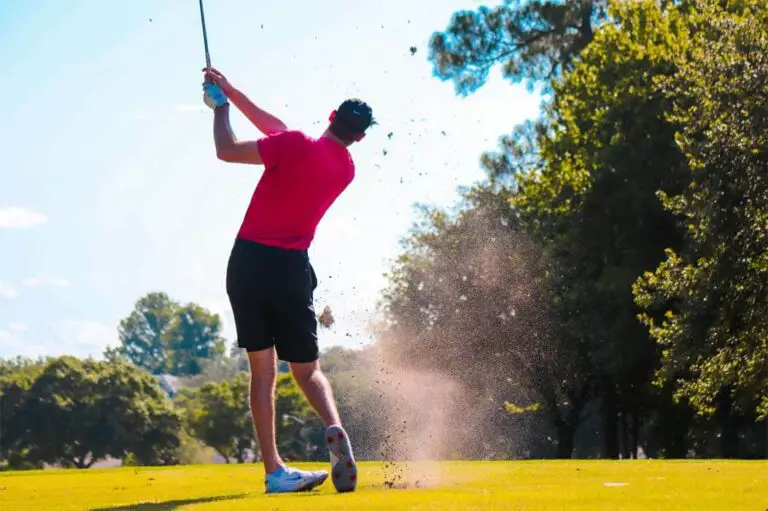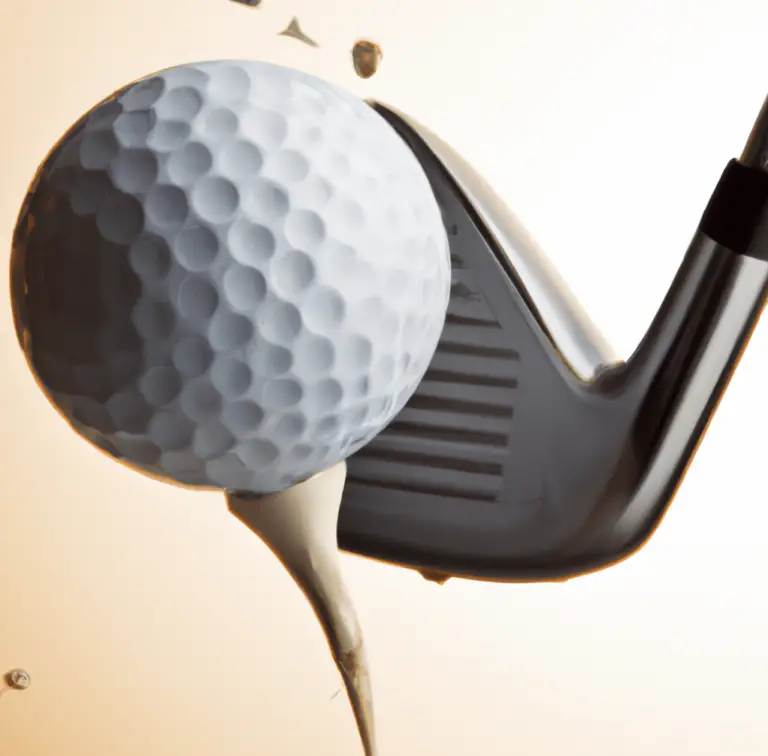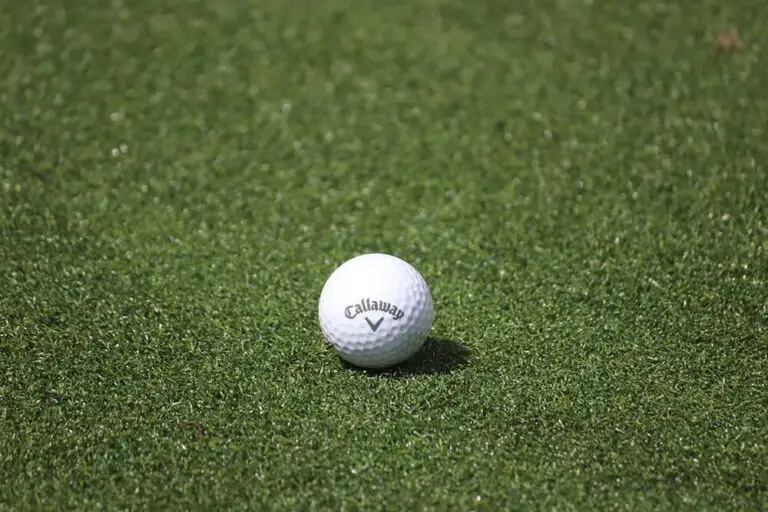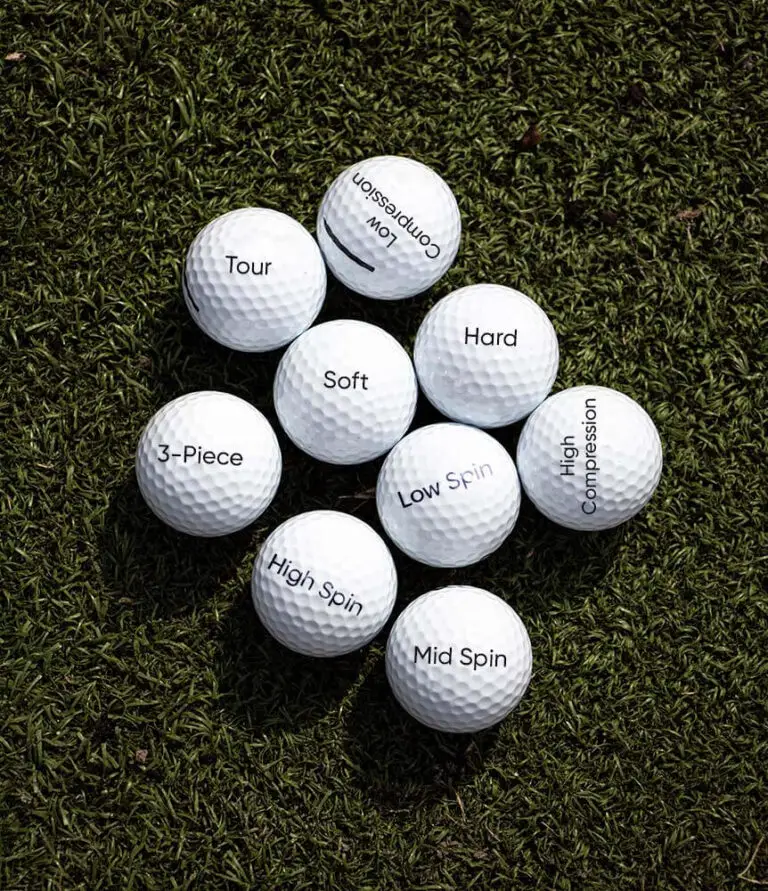Golf balls are small objects that typically have between 250 and 500 dimples on their surface. On average, a golf ball has 336 dimples. These dimples must be arranged symmetrically in order to function properly and help the ball fly through the air.
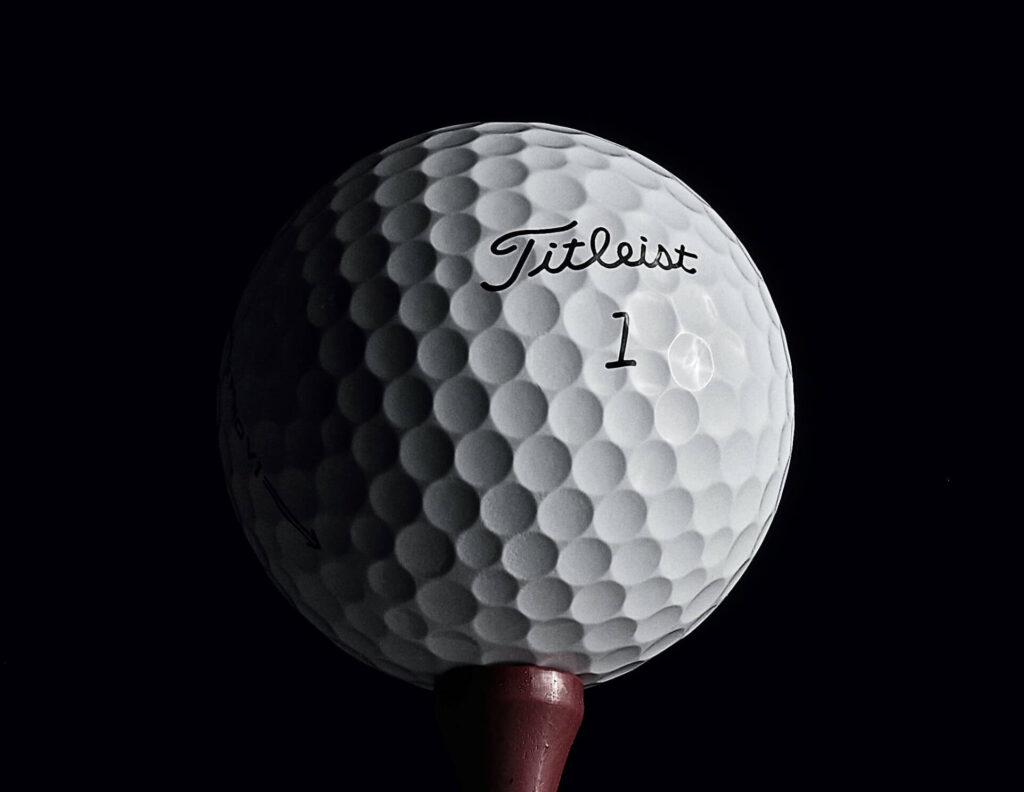
What are the dimples on a golf ball called?
The dimples on a golf ball are called, simply, “dimples.” Dimples are small indentations that are evenly distributed over the surface of the ball. The inner cup-like edges are called “turbulators” by the scientists.
Why Do Golf Balls Have Dimples?
Dimples on golf balls help to reduce the drag of the ball as it travels through the air, which allows it to fly longer and straighter. Dimples also help to impart spin on the ball, which can be used to control the trajectory and flight of the shot.
What Would Happen If a Golf Balls Didn’t Have Dimples on It?
The golf ball wouldn’t fly straight and won’t have push of the wind as its surface would be smooth. It would most likely swing in the wind in directions that are not controllable and in the grass there would be very less spin to play.
Why do golf balls have 336 dimples on an average?
The specific number of dimples on a golf ball is determined by a variety of factors, including the ball’s design and the materials used to manufacture it. But it is commonly found that the 336 dimples create the perfect round pattern and reduce the drag on a golf ball by redirecting more air pressure behind the golf ball rather than in front of it. The higher levels of pressure behind the golf balls force them to go far distances. This number has been found to be effective in providing the right balance of lift and drag for the ball to fly through the air effectively.
Golf balls with more dimples are good?
Golf balls can have a large number of dimples on their surface, and there is no upper limit to how many dimples a ball can have. However, one ball that was invented with more than 1700 dimples was eventually discontinued by the manufacturer, which suggests that having a large number of dimples may not always be optimal.
In general, it seems that a smaller number of dimples may be more effective in helping a golf ball fly through the air.
When Did Golf Balls Get Dimples?
Golf balls with dimples have been in use since at least the late 19th century. The first golf balls with dimples were made using a technique called “cast-iron molding,” which involved pressing heated, molten rubber into a cast-iron mold that had a pattern of dimples on its surface. The dimples on these early golf balls were relatively shallow and evenly spaced.
The use of dimples on golf balls became more widespread in the early 20th century, as the dimpled design was found to significantly improve the flight and distance of the ball. Modern golf balls are made using a variety of materials and manufacturing techniques, and the dimples on these balls are typically deeper and more precisely shaped than those on early golf balls. The use of dimples on golf balls has become standard in the sport, and most golf balls today have a pattern of dimples on their surface.
How Big Are Dimples on Golf Balls?
The dimensions of the dimples on a golf ball are typically measured in terms of depth and diameter. The depth of a dimple is the distance from the highest point on the surface of the dimple to the lowest point, while the diameter is the width of the dimple at its widest point. Dimples on golf balls can range in size from about 0.1 to 0.4 inches in diameter and from about 0.03 to 0.12 inches in depth. However, these dimensions can vary depending on the specific ball and its intended use.
How Much Does a Golf Ball Weigh?
The weight of a golf ball is regulated by the rules of golf and is limited to a maximum of 1.620 ounces (45.93 grams). Most golf balls weigh slightly less than this maximum weight and typically range in weight from about 1.55 to 1.62 ounces (44 to 46 grams). The weight of a golf ball is an important factor in its performance, as it can affect the distance and trajectory of the shot. Golfers may choose to use different weights of balls depending on their individual preferences and the specific requirements of a given shot.
How Big Is a Golf Ball?
According to the rules of golf, a golf ball must have a minimum diameter of 1.680 inches (42.67 millimeters) and a maximum diameter of 1.695 inches (42.99 millimeters). Golf balls that meet these size requirements are considered to be “regulation” balls and are suitable for use in official tournaments and competitions.
Most golf balls are slightly larger than the minimum size requirement and have a diameter of about 1.68 inches (42.7 millimeters). The size of a golf ball can affect its performance, with larger balls generally traveling shorter distances and having a higher trajectory than smaller balls. Golfers may choose to use different sizes of balls depending on their individual preferences and the specific requirements of a given shot.
How Do I Know Which Golf Ball Dimple Patterns Are Right for Me?
Choosing the right dimple pattern for your game can help you optimize your shots and improve your overall performance on the course. Generally look for golf balls with slow curve then deep dimple pattern.
There are several factors to consider when selecting a golf ball with the right dimple pattern for your game:
- Swing speed: The dimple pattern on a golf ball can affect the lift and drag of the ball, and some patterns may be better suited to players with slower or faster swing speeds. So if you have a slower swing speed you should generally look at balls with an average dimple but if you have a faster swing speed and lift then try some of the golf balls with less dimples and more sharp edges.
- Shot shape: Different dimple patterns can produce different shot shapes, such as a higher or lower trajectory, more or less spin, and more or less distance. So depending on the spin speed, you may want to choose more smooth dimple patterns to do less spin.
- Playing conditions: The dimple pattern on a golf ball can also be affected by the playing conditions, such as the wind on the height, so it depends on your experience and tryouts.
- Personal preference: Ultimately, the right dimple pattern for your game will depend on your personal preferences and the specific needs of your game. It may be helpful to try out different dimple patterns and see how they perform for you on the course.
But its more important to focus on the right golf ball for you than the right dimple pattern because once you get your perfect ball to play, then you will perform better anyway without know the dimple pattern.


